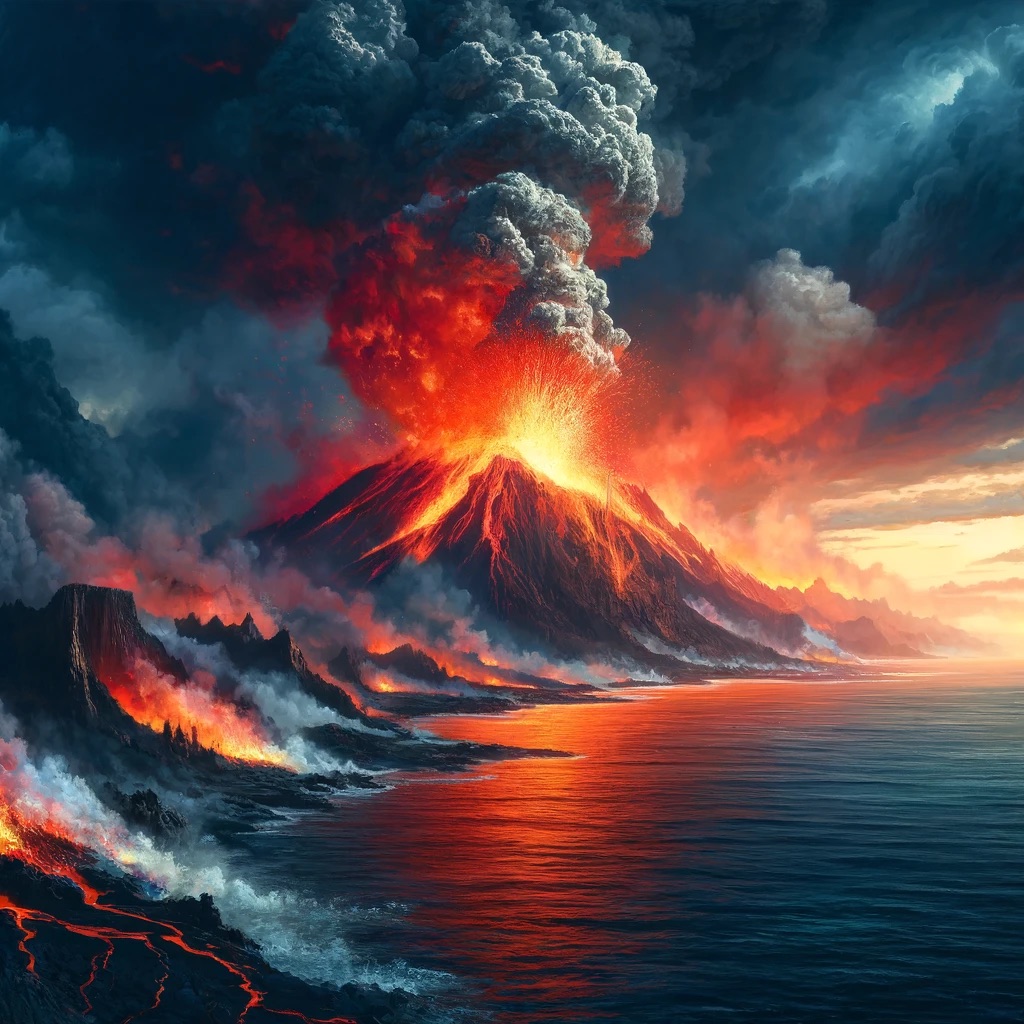
To create this image I gave Dall-E the prompt: Paint a dramatic scene of a volcanic eruption near a body of water, showing a stark contrast between fire and water. Use bold, contrasting colors to capture the dramatic interplay of elements. This was DALL-E’s response
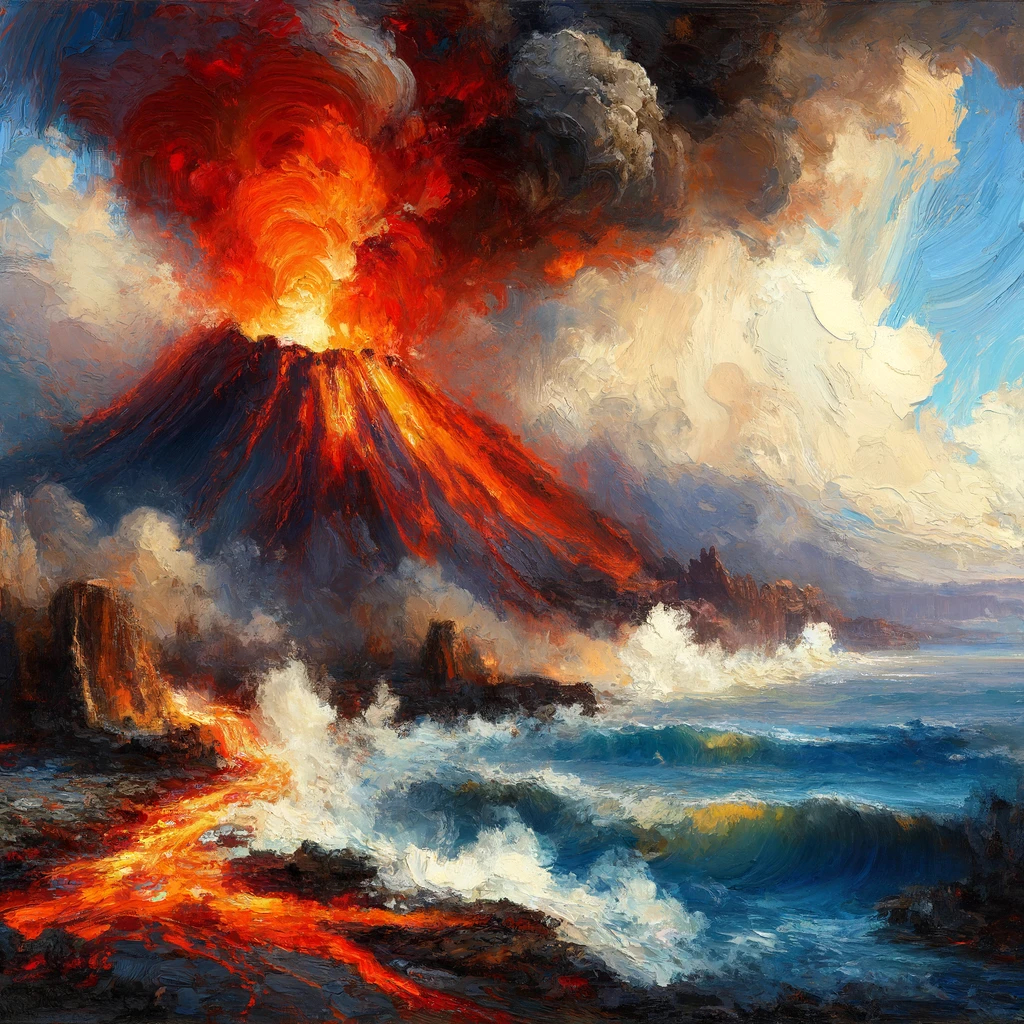
I wanted to make the image look more like a painting so I asked it to "make it look more like a painting" and this was its response.
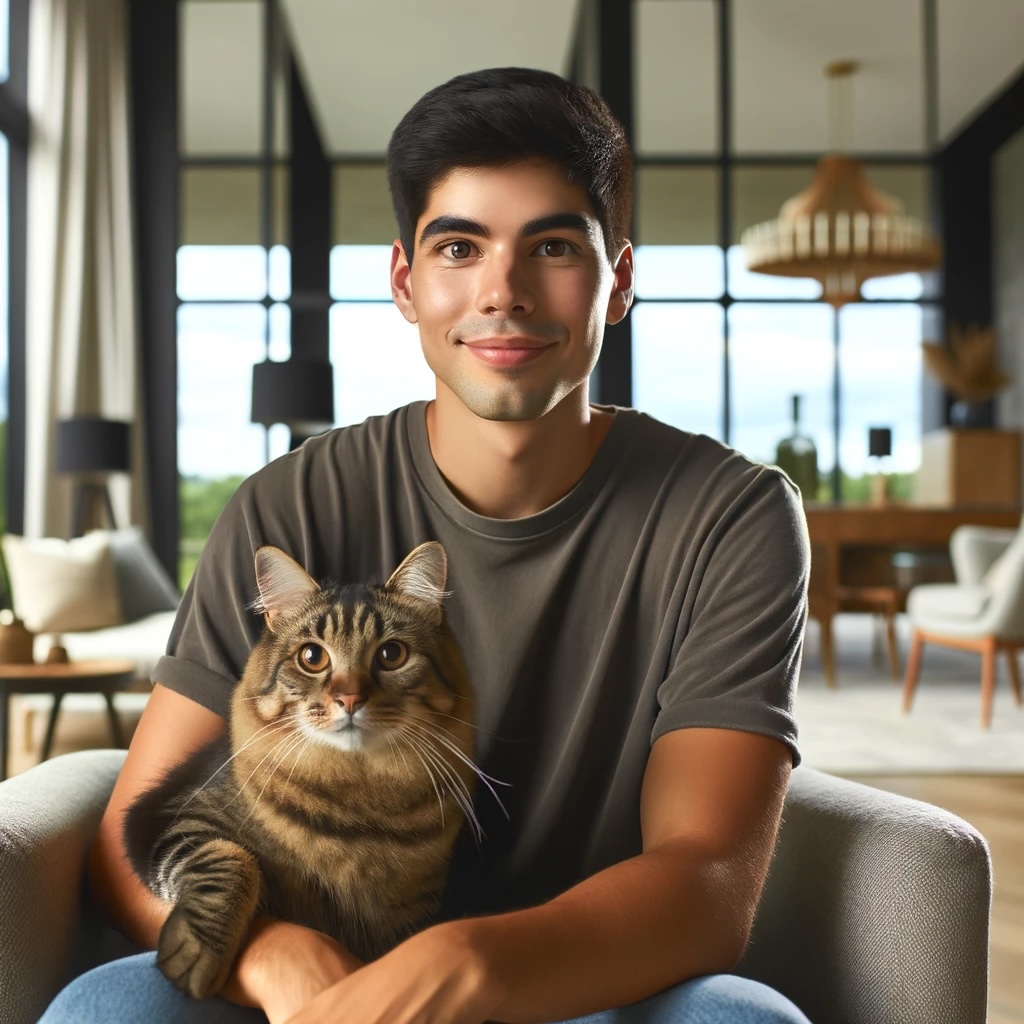
For this next image I gave Dall-E the prompt: Generate an image of a young man in his early 20s, Hispanic with short black hair, wearing a casual t-shirt. The cat is a large adult tabby with brown eyes. The man is sitting in an armchair with the cat on his lap, they are both happy, the background is a brightly lit modern living room with lots of natural light. This was DALL-E’s response.
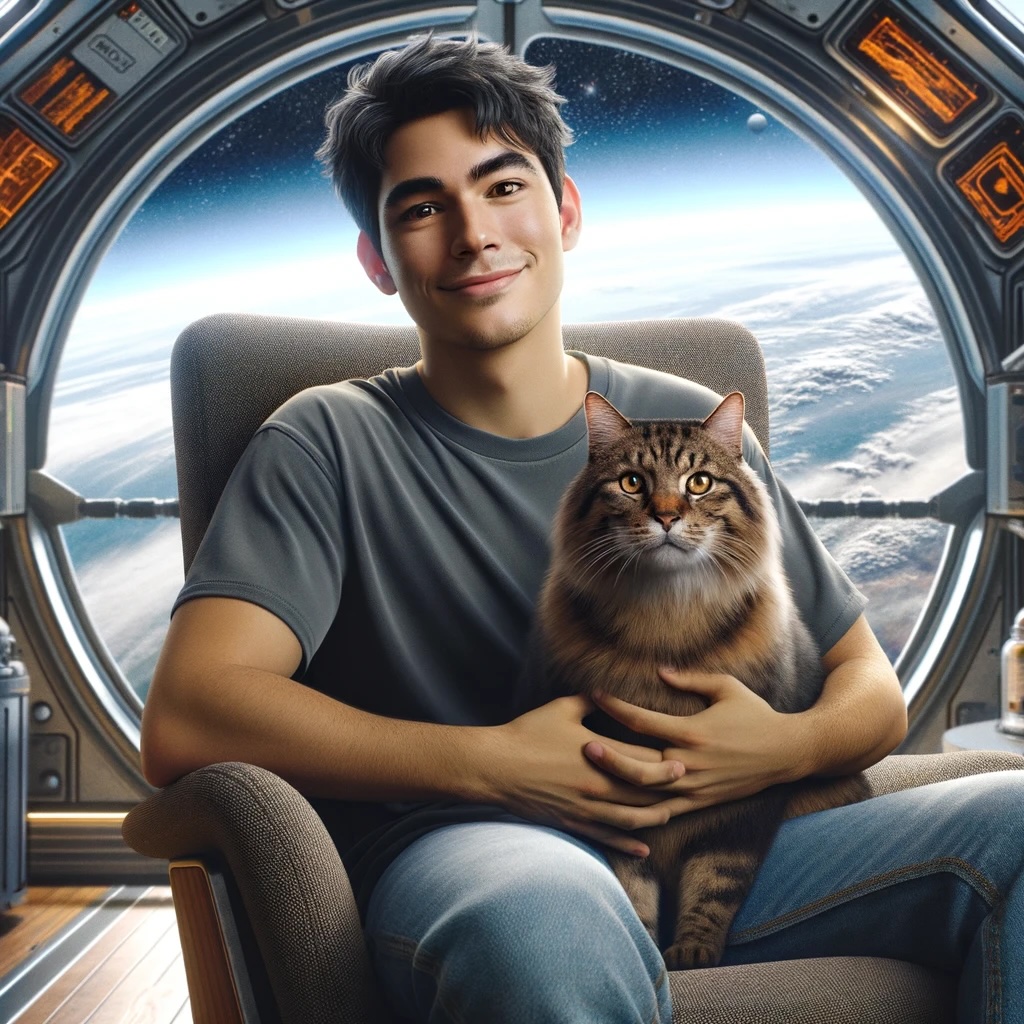
I wanted to change the background of the portrait so I asked Dall-E to "make the background the inside of a space station overlooking the earth" and this is what it generated.
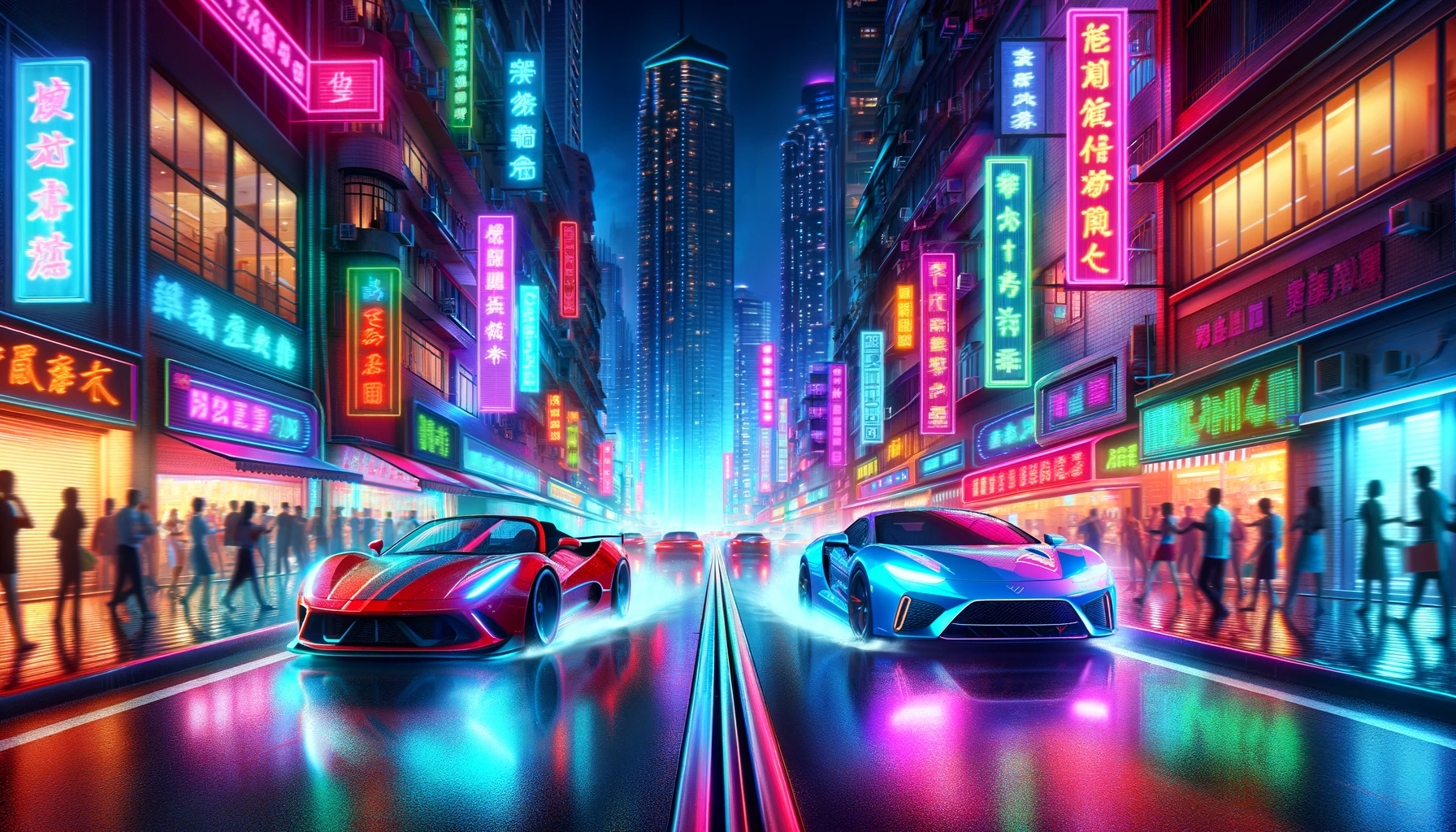
For this image I wanted to create an image that looked more realistic and I gave Dall-E the prompt: Generate a photograph of a neon-lit city with bustling nightlife and two cars racing in the forefront. This was what it generated.
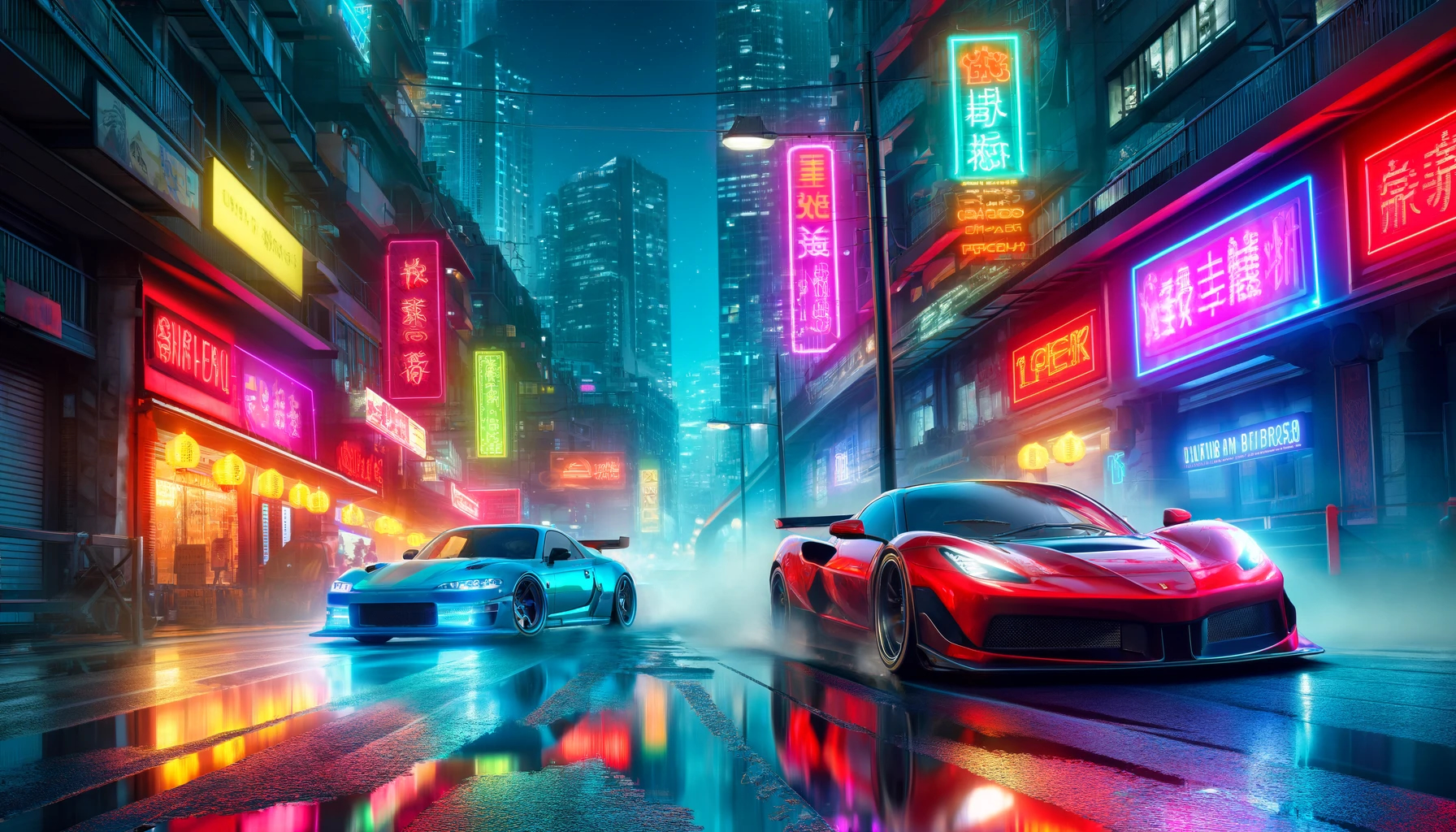
The first image wasn't as realistic as I hoped so I asked "make it look like a realistic photograph". As you can see this second image looks more realistic than the first.